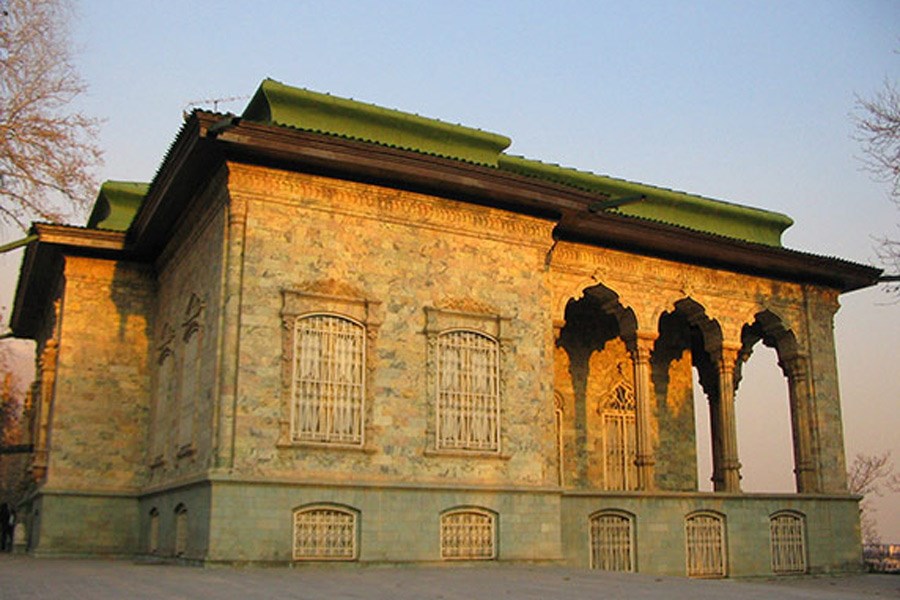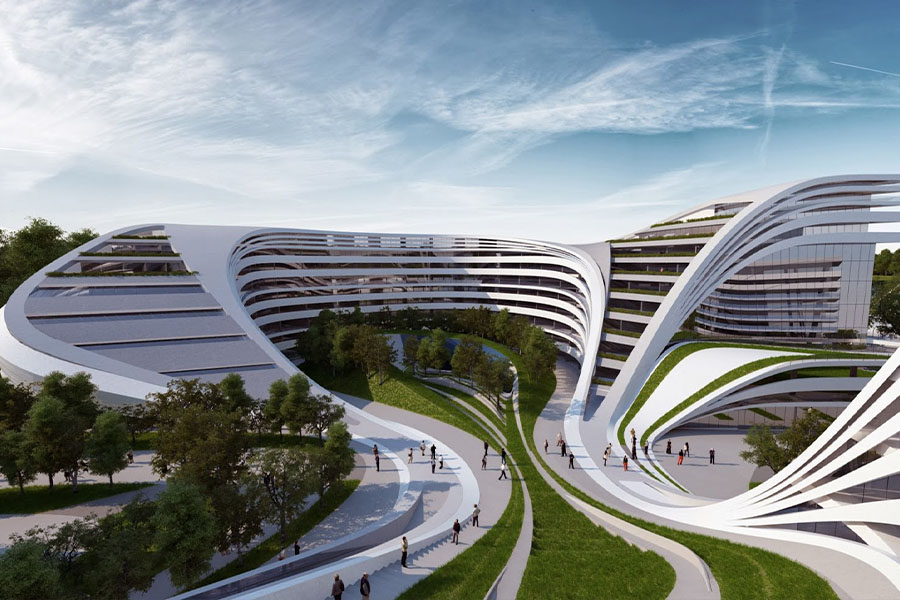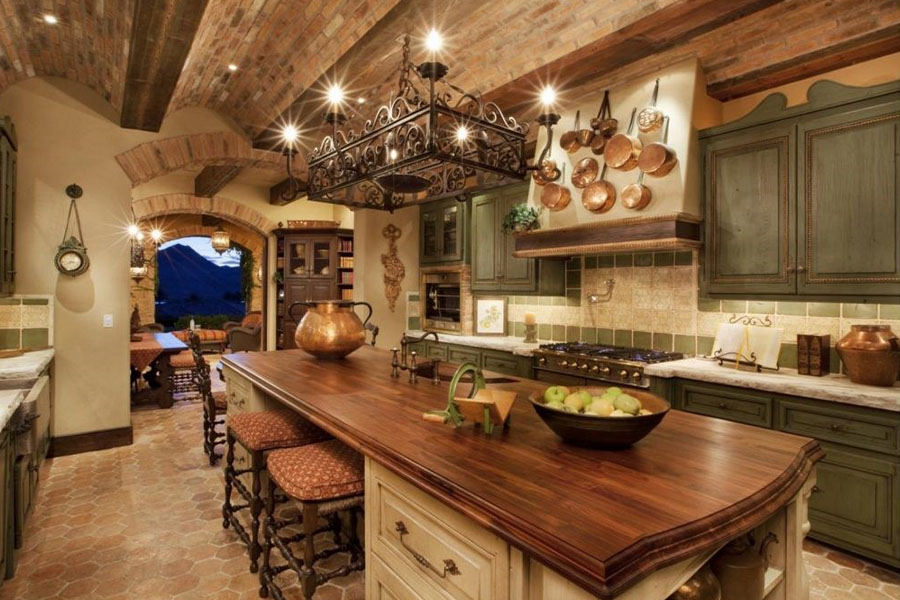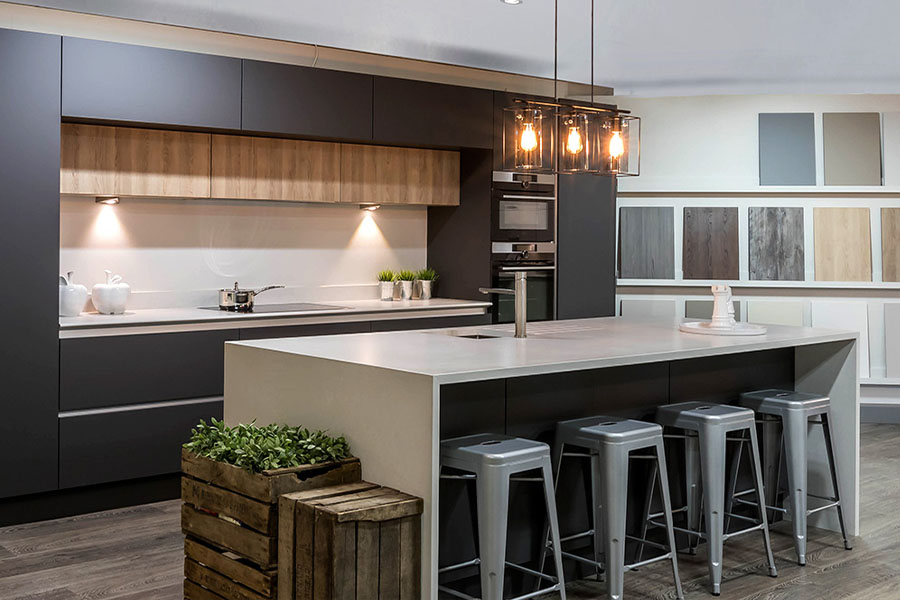How tradition is reflected in contemporary Iranian architecture
Abstract
Continuity, transparency and unity have been accepted as the principles of contemporary Iranian architecture and some architects have presented new experiences in the new design of Iranian Islamic architecture based on these principles. Recognizing identity-oriented tendencies in contemporary Iranian architecture is an opportunity to know the principles of this period. The present article tries, with an analytical-qualitative approach, to analyze the newly designed works in contemporary architecture. Therefore, after the theoretical framework of research based on the specialized literature of the subject was drawn, with Based on a comparative comparison of one hundred projects among the works of contemporary Iranian architecture in the years after the Islamic Revolution, the research hypotheses were explained. In order to prove and disprove the hypotheses, using critique, analysis and study of contemporary Iranian architecture from the perspective of experts in this field Regarding the body and content of 20 case studies, have been analyzed and studied. Based on research in the field of contemporary Iranian architecture, the overall results showed that the identity, tradition of Iranian Islamic architecture can be read based on the principles of continuity, transparency and unity. .
1- Expressing the problem
Architecture must be based on truth and originality. Traditional Iranian architecture, due to its cultural and doctrinal support, has philosophical principles and in cases where its principles of origin met the physical and practical needs of society, it has used other principles. It is on this basis that preserving the culture and beliefs of a nation in architecture in contemporary architecture is of great importance. And cultural identity depends on the observance of indigenous traditions and beliefs. (Ayvazian, 1997) Continuation of the features of traditional Iranian architecture in contemporary design, It does not mean preserving and repeating the shapes of the past and a creative and dynamic look is one of the necessities of modern design.
What is certain is that the contemporary architecture of Iran is not very prolific. Do not become a document. It will not be evaluated.
Transparency, unity and continuity have been the principles and topics discussed in the past of our country's architecture. And today we are unaware of it and when we ourselves can not recover and apply the architectural values of the past, there are no valuable parts of contemporary architecture. All the principles of architecture were used in the construction of the past and were not separate from architecture.
Questions that arise. How to look to the future and return to the roots and traditions at the same time?
How can the principles of the past architecture be used while being contemporary?
In this short space, we have tried to answer these questions.
2- Research method
The research method in this study is library-documentary and qualitative and case study. Instead of studying a wide range of examples and phenomena of contemporary Iranian architecture, this study seeks to prove the quality and how the variables of existing traditions in architecture in successful and sustainable projects of contemporary Iran and with the views of some contemporary Western architects towards tradition. The only slow way to reach contemporary Iranian architecture is to use these components in architectural design.
3- Identity
It is a feeling of belonging to a material and spiritual set whose elements are already formed. The identity of the place is a reflection of the social and cultural aspects of the place. (Nofel 2009)
The meaning of identity in the dictionary is the essence and truth of something.
Amid Dictionary of the truth of an object or person that contains its essential attributes, personality and essence.
Despite all the complexities of the concept of identity and different interpretations of it by experts, Brexit is not hidden. In contemporary Iranian architecture, this word has experienced a crisis and has become an abstract concept.
The fading of the concept of identity is not specific to the field of architecture, as this weakness is evident in various areas of national socio-cultural and so on.
Identity can be considered the manifestation of culture in the environment because places take meaning from man and man is a set of beliefs and ideas that form and manifest his culture and the manifestation of human culture in place and environment can be seen that That is his identity.
Today, the social environment of the city is less understood. The city today is no longer an inspiration for artists. The modern city does not provide enough facilities for living. Streets and squares are no longer a place for people to gather, but merely a means of communication. Today, the home of the city and the country do not give him what are the highest values in human beings, that is, the same social affiliations and cultural products. A system has not become a meaningful place. Goethe puts it this way: "The farm, the forest and the garden were just space for me until, in my love, you turned them into places." Now what do these have to do with architecture and urban planning? ?
Place means the place to which we belong. Only with my presence does man become meaningful, and man will become meaningful only by having a place, and there is a connection between it, which is called identity, so man gives place to identity, and Co-location to human beings and our environments become social environments only if they provide us with rich possibilities in determining identity, and this is the physical identity (indigenous architecture) that gives place its own meaning and connects human beings with place. It connects and place and human become two inseparable components. (Ardalan. Nader and Bakhtiar, Laleh 2001)
The main point of the concept of identity is the factor influencing its formation, which is likened to "Andson" in the following way:
The space that governs the individual or society, which is actually a kind of spatial and environmental science of the individual or society.
3-1- Identity in architecture
Architecture has a strong connection with culture, behavioral patterns and values of society and that is why the architectural styles of each period are a reflection of the culture and art of that period. Each new style of architecture is based on the principles, methods and traditions of previous styles. And for this reason, the various styles of architecture in the past have such a strong relationship that it seems difficult to demarcate between them. Architecture may be based on tradition, but it no longer belongs to it. Tradition is not a thing of the past. Tradition is always with us and will be. So if we interpret the identity of architecture in culture and tradition. Architecture that is based on the culture, tradition and needs of today and not the past is architecture with an identity. (Calligrapher. Mirza Kouchak, Shahriari Nasab 1394)
In the field of architecture, the discussion of identity evokes the imitation of the past
4- Transparency and architecture
Another feature of Iranian architecture is its creativity. This creativity manifests itself in two forms through architecture. One is theoretical creativity, that is, the intellectual basis on which the architectural work is based, and the other is the spatial activities that form the architectural part of that work. If we evaluate Iranian architecture in terms of spatial angles, the evolution of spatial diversity will increase and new spaces will be created. Spaces reach more openness and style and the old patterns of Iran evolve in order to expand the spaces. (Habibi, 2011)
And this is the same principle of transparency that has been applied to the principles of traditional Iranian architecture.
On the other hand, the concept of transparent space is opposite to the concept of closed space. In such an atmosphere, the course of human movement and gaze takes place in continuity. The presence of an intermediate space is one of the manifestations of transparency and spatial continuity in Iranian architecture. (Shayan and Qaripour 2007) While passing through the open space with the interior space and vice versa, respond to some side functions and continue the spatial dynamism and fluidity. (Memarian, 2010)
5- Continuity
The job of architecture is to organize space. In any space, time is the main product of architecture. Architecture organizes space with the language and expression of architecture. It organizes a space that is in contact with human beings and has a dialogue with them, and in fact it is an order and prose that is alive in expression and makes human beings think and meditate by moving within space. Basically, it is a more valuable and creative space that meets all the architectural and aesthetic criteria. It is such an atmosphere that people have a different affinity with it and communicate with it easily. The feeling of the architect and designer is well observed in it and such an atmosphere of any style and context is worthy of reflection and criticism. (Habibi, 1390)
In organizing space in Iranian architecture, separate volumes have been seen less. Coherence and mobility in organizing the architectural space of Iran has caused, on the one hand, successive and intersecting spaces to be considered as expansion of each other, and on the other hand, to continue the space, we do not face interruption. In fact, the compositional patterns eliminate the spatial obstruction by overlapping the vertical and closed vertical layers around the open and continuous space.
6- Unity
Unity, while plurality, does not mean the repetition of uniformity and unity, but the cooperation and coordination of the components in achieving a single goal. This principle should be considered as the basis of all principles. The translation of the principle of unity in spaces and architectural body is examined with the help of the following principles: emphasis on physical focus and centrality with a tendency to central organization patterns, emphasis on embossing or symmetry and physical spatial orientation, placement of main building spaces on its main axes, placement Sub-spaces and communication of the building on sub-spaces, placement of mediator or meander spaces on both sides of the main axis, emphasis on centralization in Islamic layout and drawings (Ranjbar 1386) in facade and body building and rhythm of columns and windowing are often divided into individual numbers. The middle part of the space should be empty and human gaze should not be fixed on the mass and mass of the building such as columns, piers and walls. Also, individual divisions in windows emphasize centrality. (Vagharipour, 2003)
Architects in embodying the unity and manifestation of monotheistic thought, have used concepts such as justice and elements such as geometry, light and weight in a grandiose context, concentrated with the frequent presence of elements that only mention the one Creator (Goodarzi et al. 1393).
7. How the principles of architecture can be expressed with architecture
In the past, by applying the principles of architecture, in addition to beauty, it has caused the identity and compatibility of art with knowledge and application, and these principles have been an integral part of architecture. The principles of architecture were not only not cumbersome, but also showed the way to the architect and builder of that time.
In architecture, a balanced balance between the building and the natural environment is evident. The deep sense and works of the creators of Iranian architectural works caused the physical elements to determine their presence in their place and place. (Diba, 1999)
The opposite point is the closed and completed spaces of continuity and transparency. In such views, the path of human movement or his gaze is in continuous continuity, so that the openings of the facade in horizontal and vertical lines cause transparency along the walls and columns. (Vagharipour, 2003)
8- Modernity
In philosophy, the word modernity was first used by Jean-Jacques Rousseau in France. With the same philosophical point of view, Charles Checkens offers an interesting analysis of the architectural process of recent years, or in other words, on a larger scale. He does not look at modernity as an emerging phenomenon, for him modernity in the general sense of the word is a concept that has always existed since the Renaissance or perhaps earlier, which has led to the emergence of new styles and languages of architecture. How has the Western architect implemented the concept of modernity?
8-1-Tradition and modernity in the West
It is safe to say that Le Corbusier is one of the leaders in modern architecture in the world. A brief look at his work leads us to the point that he not only ignores the traditions and principles of classical Western architecture in his work, but also the principles Modern architecture is based on exactly the same principles and traditions of classical Western architecture. Le Corbusier traveled extensively in Europe, sketching and analyzing many monuments from different countries. He used the "golden ratio" in his modular system, he developed this system in continuation of the tradition of Da Vinci and others who used the proportions of the human body to transform the form and appearance and function of architecture. And used them in many of his designs.
Also, a brief look at the works of Herzog and Demoren, considering their classical architecture, emphasizes the design of each element in its own place. And in the whole project, they have paid attention to a single phenomenon. The two have avoided the repetitive and structural discussions of modern technology, instead advocating solutions that fit the construction culture of the project site. They try to use geological and biological similarities with all available hazards as freely as possible. They believe that one of the goals of architecture is to increase our perception of the universe, and that's the same. Using the principles of classical architecture.
- Tradition and modernity in Iran
Iranian architecture has inherited 3,000 years of codified architecture, in order to be able to contribute to world architecture again, solving in Western architecture is not the solution, but by properly understanding the issues of time, taste and color of its land can create a new idea. In this approach, the surface and appearance elements of the past architecture are not applicable, but the dominant spirit of the past architecture, culture and land, climate, radiant sun should be used in the project. (Afshar Naderi, 1374)
9- The principle of the journey from plurality to unity
Unity in plurality does not mean repetition of uniformity and unity. Rather, the cooperation and coordination of the components is to achieve a single goal. This principle should be considered as the basis of all principles. The translation of the principle of unity in spaces and architectural bodies is examined with the help of the following principles
Emphasis on the focus
Physical spatial centrality with a tendency to central organizing patterns
Emphasis on pairing or symmetry and physical spatial orientation
Placement of the main spaces of the building on its main axes
Placement of sub-spaces of the building on its sub-axes
Placement of mediator and meander spaces on both sides of the main axes, emphasis on centrality in Islamic layouts and drawings (Ranjbar, 2007)
Considering the mentioned examples and reviewing the selected works of the best contemporary architects, we reach the conclusion that all the architects who have worked on successful projects and are always beautiful, practical and pleasant in the eyes of all, try to know the roots. And architectural patterns of the past and trying to change and update the concepts of past Iranian architecture in their designs.
Conclusion
Iranian architecture has principles that must be paid deep attention to. Because if, if we do not suffice with physical and visual examination, it will be promoted that the principles of traditional architecture will not be applicable in contemporary architecture. What is important in this regard is to know the basics of Iranian principles and values that can be manifested in the contemporary era. Contemporary architecture becomes very memorable and identical when it follows the principles of Iranian architecture. An identity that could be created in many of our buildings and cities with a little planning. But unfortunately it is lost. With the increasing growth and without foresight of cities, this need to have more identity of buildings is seen.
As mentioned in this article, the traditional concepts of Iranian architecture are important, not just a copy of the past architecture or a copy of Western architecture, but according to the concept of each principle and attention to all the details in the design can be done. Everyone should feel comfortable in it and its performance should be clear.
The beautiful architect gives people the opportunity to live right and be good. And he has a dream, peace and a stable and forward-looking vision. It is intertwined with the canvas and has historical-cultural values.
-2.png) Effect Design Group
Effect Design Group



